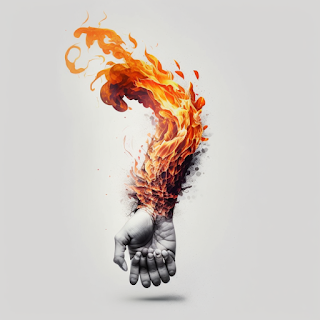Should You Carry a Firearm While Bicycle Touring?
As someone who has toured extensively throughout the United States by bicycle, I’ve often wrestled with the question: Should I carry a firearm while touring?
It’s not a simple yes-or-no answer. The decision to carry a gun involves serious considerations—personal safety, legal consequences, practical risks, and ethics. Here's a deeper look at the key factors that every touring cyclist should think about before strapping a weapon to their rig.
🔒 Personal Protection
Many cyclists, especially those riding solo or through remote areas, feel vulnerable. The idea of being miles from help, possibly with no cell signal, can be unsettling. A firearm can offer a sense of security in case of a rare but dangerous human or animal encounter.
🛑 Deterrent Value
A firearm can serve as a deterrent against crime. In some areas, just knowing you're armed might discourage potential attackers. This logic often appeals to those riding through unfamiliar or high-crime regions.
🧠 Peace of Mind
Even if you never need to use it, a firearm might simply help you feel safer, especially on long, isolated stretches of road. That extra sense of control can ease anxiety, particularly for solo riders.
⚠️ The Risks of Carrying
While the appeal of added protection is understandable, it comes with significant risks.
🔫 Escalation of Conflict
Pulling a gun can escalate a tense situation. What might have been resolved with calm words could suddenly turn violent. You may also misread a situation and act too soon—putting yourself and others in danger.
🧷 Lack of Training
If you’re not well-trained in firearm safety and self-defense, you could hurt yourself or someone else by accident. Owning a gun and being ready to use it under pressure are two very different things.
🧾 Legal Consequences
Gun laws vary widely from state to state. Some states require permits for concealed carry, others have strict transportation laws, and crossing state lines adds more complexity. One oversight can result in serious legal trouble.
🧴 Alternatives to Firearms
For many cyclists, non-lethal options are a safer, more practical form of self-defense:
-
Pepper spray – Lightweight, effective, and easy to carry.
-
Personal alarms – Loud enough to scare off threats and attract attention.
-
Whistles or airhorns – Simple tools that can buy time and deter an aggressor.
-
Situational awareness – Often your best defense is simply trusting your instincts and leaving when things feel off.
🚴♂️ My Personal Experience
On one tour, I was riding from Lubbock to Pensacola when I got caught in a heavy downpour. I ducked under an interstate overpass to get out of the rain. A group of homeless individuals were nearby, using the rain to clean up. At first, I didn’t feel threatened—but when they noticed me and began moving in my direction while talking among themselves, I started to feel uneasy.
I decided to leave before I could find out whether they had good or bad intentions. If I had carried a gun, would I have felt safer? Maybe. But would I have also been tempted to overreact? Possibly. That moment stuck with me. It made me realize that the presence of a weapon can be both a comfort and a liability.
🤔 Final Thoughts
The decision to carry a firearm while bicycle touring is deeply personal. It depends on your comfort level, training, the regions you're riding through, and your willingness to accept the risks and responsibilities that come with being armed.
There is no right or wrong answer—only the one that’s right for you. Just be sure to:
-
Know the laws of the states you’ll be touring
-
Understand the risks of escalation
-
Consider non-lethal alternatives
-
Get proper training if you choose to carry
Have you ever considered carrying a firearm while touring? Or do you prefer to rely on awareness and alternatives? I’d love to hear your thoughts in the comments.



Comments
Post a Comment